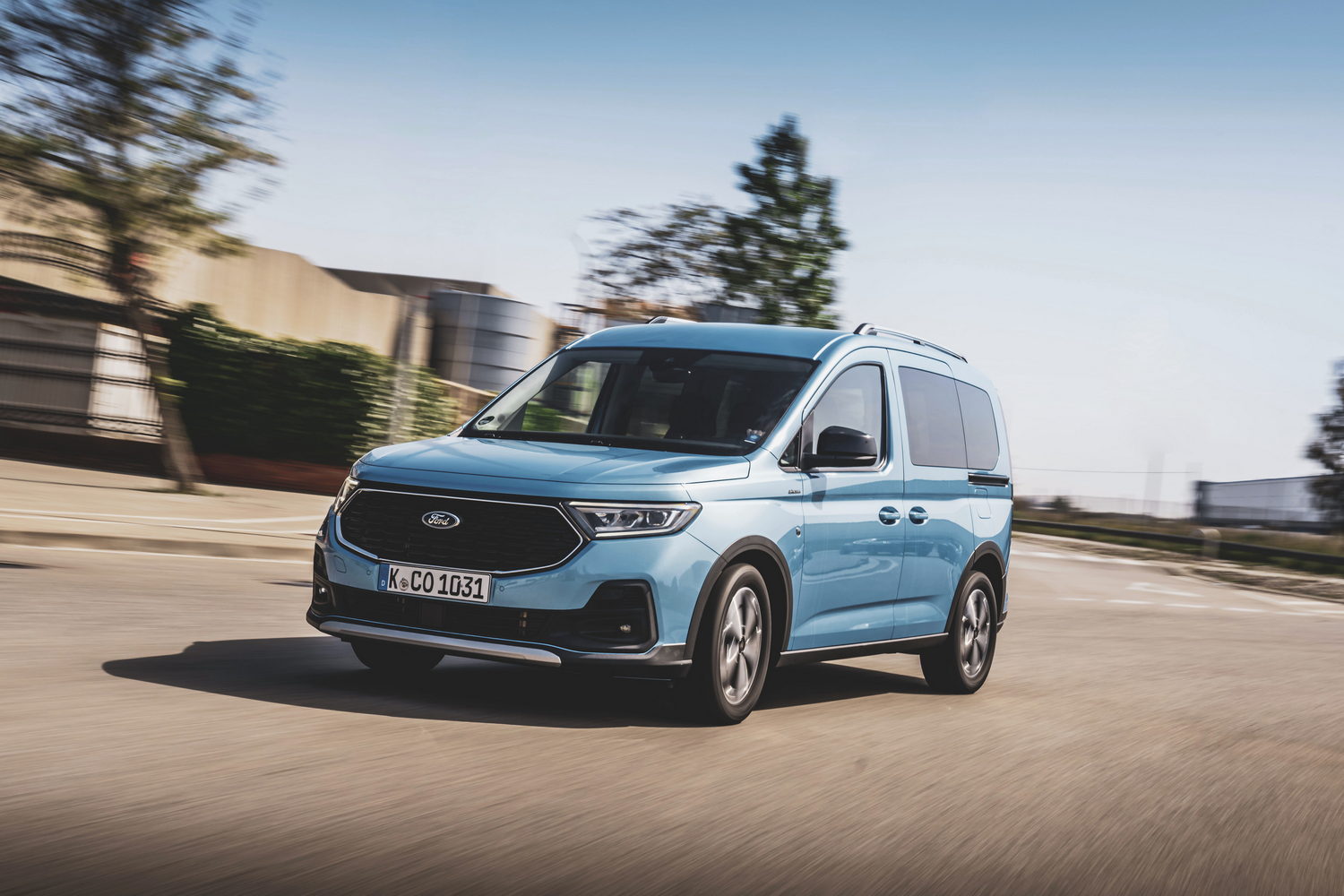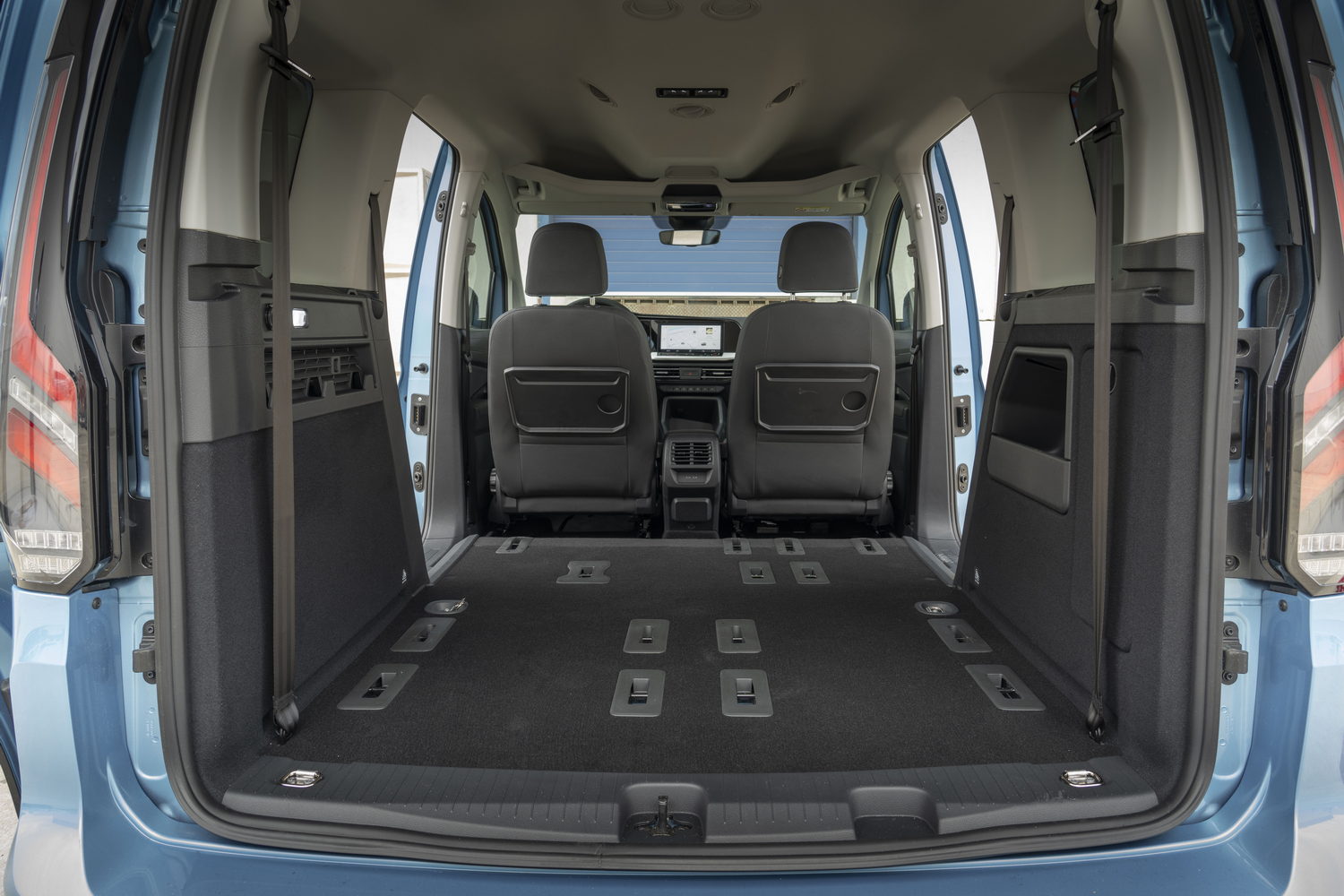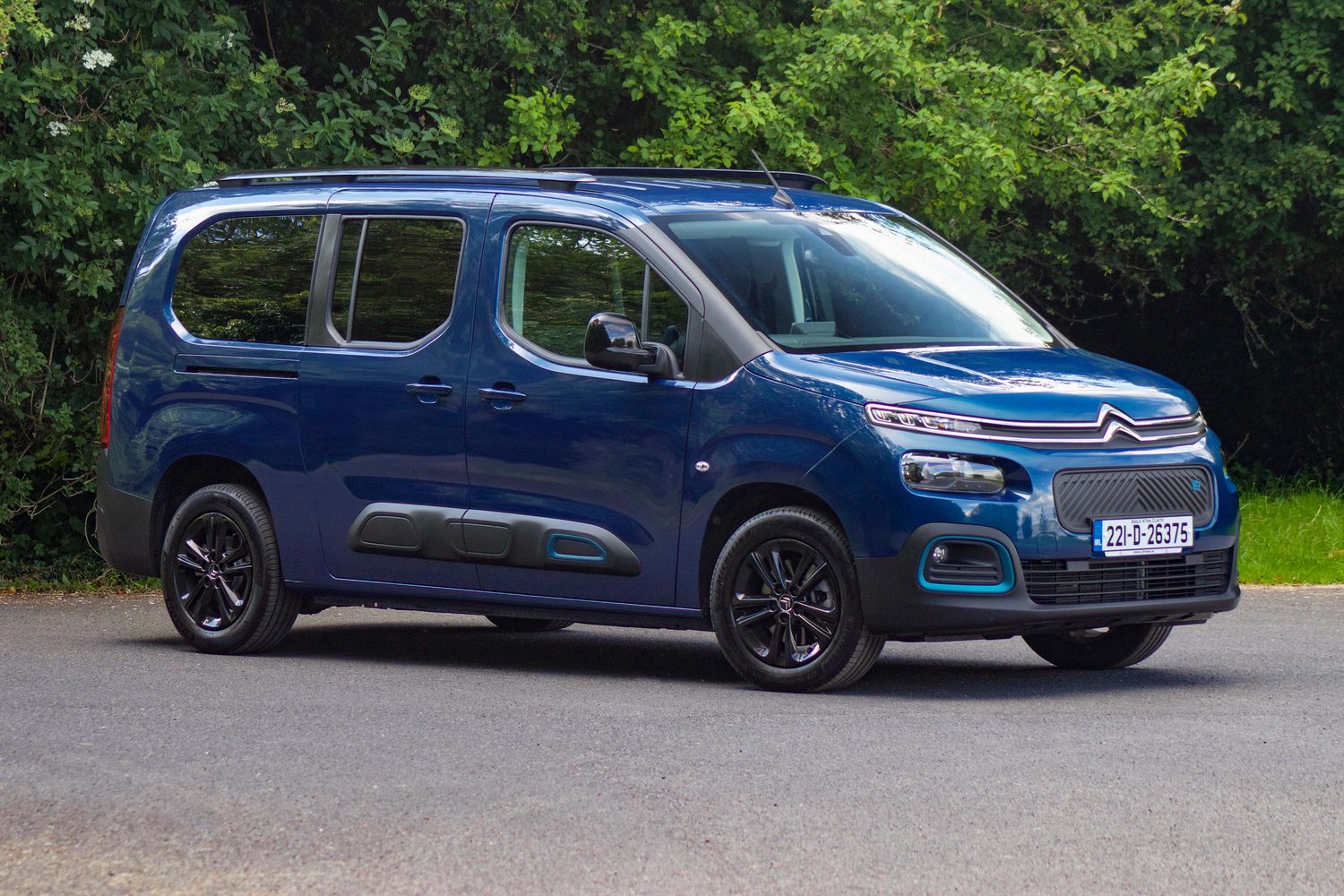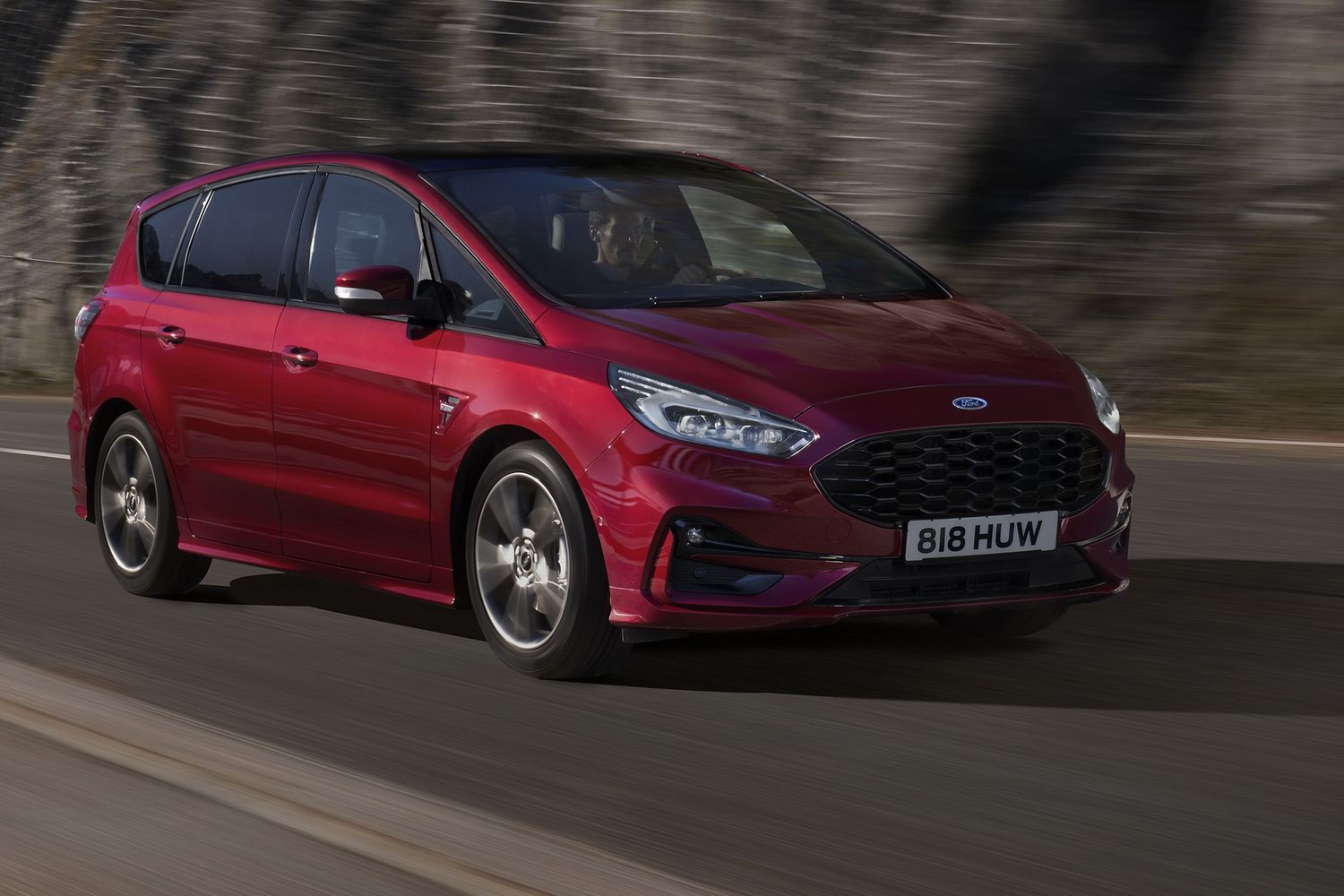The Ford Tourneo Connect might never have been the most desirable family car on the market, but it might just be one of the most practical. And now there's a new one, which carries quite a weight on its shoulders. With the impending demise of the Ford S-Max and Galaxy MPVs, this is set to be the mainstay of Ford's MPV range. Because it shares so much with the Transit Connect van (the two vehicles are mostly the same but for the windows and seats), the Tourneo Connect is now based on the Volkswagen Caddy, which is itself one of the best-selling van-based MPVs on the market. As a result, the new Ford feels chunkier and more high-tech than ever before, but is it an improvement on its predecessor? And can it really replace the S-Max?
In the metal
From the front, it isn't immediately obvious that the Tourneo Connect is so closely related to its VW-badged arch rival. The front end is distinctly Ford-ish, with the downturned grille and sharp headlights, neither of which bear any resemblance to the nose of the Caddy. But further back, the similarities begin to surface more clearly. Not only is the basic silhouette more or less identical (nose aside) to the Caddy, but the taillights are similar and the whole of the upright tailgate looks the same.
Not that there's anything especially wrong with that. The Tourneo Custom looks pretty good, particularly in the more rugged Active form seen here, although that's helped a tad by the bigger wheels and body cladding. The longer Grand Tourneo shape (the images show the standard-length model) doesn't do it any favours, though (we think it accentuates the car's van roots), but it somehow doesn't feel as van-like as Tourneo Customs did in the past.
It doesn't feel especially van-like inside, either, but it does share a lot with the Caddy. Little things, such as the key, are no big deal, but the steering wheel is clearly a rebadged Volkswagen item, as is the toggle-style gear selector and the whole centre console. The dashboard is lifted pretty much directly, too, and even though the touchscreen has been reskinned with Ford graphics and fonts, it's still obviously a Volkswagen-derived system.
Again, this isn't the end of the world. The Caddy/Tourneo Connect cabins don't feel like van-based interiors thanks to the more upmarket materials and the technology, and it's a vast improvement on the old Tourneo Connect. Yes, some of the plastics are still hard, but they're no worse than they are in, say, a Skoda Scala, and while VW's touchscreens might not be what they once were, the system still feels better than the old unit found in the previous iteration of the Tourneo Connect. And it'll do all the things owners will want from their family car.
The one thing that does let the cabin down, however, is the insistence on using VW's dire touch-sensitive switchgear. Not only are the lights controlled that way, but the heater system uses little touch pads below the screen and there's a touch-sensitive volume control, too. This is clunky and irritating to use, and that spoils the Tourneo's family-friendly credentials somewhat.
But the thing buyers are really drawn to is the space on offer. Up front, you don't really notice the enormity of the Tourneo's cabin, but the minute you look up you notice just how much headroom there is. And because the windows are enormous it's quite an airy place to be - particularly in the front. Yet despite the real estate above your head, it's the rear space that impresses most.
Buyers can specify their Tourneo Connect in five- or seven-seat forms, but either way, those in the second row of seats can sit high without losing out on headroom and there's plenty of legroom for adults. Four grown-ups can easily get comfortable in there, and if you choose the seven-seat option, it's possible to squeeze seven tall adults in. Admittedly, getting in and out isn't always dignified, despite the sliding doors inherited from the Tourneo's commercial vehicle heritage, but you can accommodate seven with relative ease.
Alternatively, you can take advantage of the huge boot. Opt for the shorter Tourneo Connect (as pictured) and you get a plentiful 1,213 litres of luggage space, which expands to 2,556 litres if you fold the rear seats down. Upgrade to the seven-seat Grand Tourneo Connect we tested, and the maximum space grows to 3,105 litres. Even with the second row of seats in place, there's a massive 1,720 litres of carrying capacity, and boot space is still respectable with the third row in use.
Driving it
The Tourneo Connect and Grand Tourneo Connect are available with a choice of two engines - a 1.5-litre petrol and a 2.0-litre diesel - although neither is especially potent. The petrol engine produces up to 114hp and the diesel we tested ups that to 122hp, but while it has ample grunt for mooching around town, we found it a bit sluggish when you're joining a motorway or major road. That may be partly down to the optional seven-speed automatic gearbox fitted to our car, though, which sat in place of the standard six-speed manual. Even so, it proved relatively economical, using a little over five litres of diesel every 100km, which isn't bad going for something so boxy.
Admittedly, the diesel engine isn't the most refined thing you could put under the bonnet, but then the Tourneo isn't especially quiet anyway. As you might expect from such a boxy body, there's quite a lot of wind noise and there's even more road noise. And if there's a strong crosswind then the slab-sided shape makes it a little bit disconcerting.
But the driving experience isn't all bad. You sit quite high in the cabin, which gives you an SUV-style view out, and the steering isn't too light. Maybe it doesn't offer that much feel for what the front wheels are doing, but who cares? Nobody is buying this thing to go around corners quickly. The Tourneo is reasonably manoeuvrable for something of this size, and it feels relatively stable and easy to drive, which should stand it in good stead with buyers.
The suspension has to deal with a wider range of load configurations than most cars, and it suffers slightly, and as a result it's a little firm when there isn't much in the boot. That said, it isn't too shabby for a vehicle of this ilk, and the Tourneo is quite smooth over all but the most savage potholes and very broken surfaces. On the motorway, it's absolutely fine. And while the body does naturally sway quite a bit in corners, it isn't terrible.
Not that anybody is likely to want to chuck the Tourneo around too much. There's plenty of grip, but it doesn't engage the driver in any way; it's much better suited to more mundane driving conditions. And although the Active trim sits slightly higher, don't expect the Tourneo to be a serious off-roader. While fitting some all-season or winter tyres might make it reasonable in the snow, and the ground clearance is enough for most uneven surfaces, there's no all-wheel-drive option and it's no mud-plugger.
What you get for your money
Irish prices currently start at €38,209, which pays for the standard-length Tourneo Connect in Titanium trim, although Ford is set to offer a cheaper Trend model in 2023. For now, though, the Titanium gets you air conditioning, front and rear parking sensors and 16-inch alloy wheels, as well as heated front seats. Moving up to the Grand Tourneo will take the starting price to €39,981, while the Active trim level, with its wheel arch mouldings and larger 17-inch alloys, commands a premium of around €1,000.
Those prices make the Ford marginally more expensive than the Citroen Berlingo MPV, but that is now only available in electric form, which won't suit everyone. Compared with the Caddy, the Ford is a few hundred euros cheaper, but the difference is negligible.
Summary
The Tourneo Connect is, overall, much better than its predecessor. It's still decent to drive, but it's better built than before and the technology is stronger, too. It's practical, as well, and while those moving from an S-Max will notice the shift in attitude, the Tourneo Connect is still easily up to the job. The Ford is certainly a more appealing MPV than most of the cars developed to be commercial vehicles first.






























